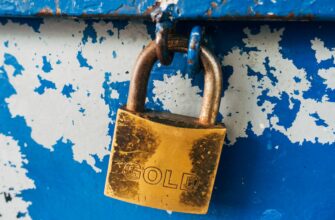- Why Crypto Wallet Security Is Non-Negotiable
- 1. Use a Hardware Wallet for Cold Storage
- 2. Create Uncrackable Passwords & Passphrases
- 3. Mandatory Two-Factor Authentication (2FA)
- 4. Update Software Religiously
- 5. Recognize & Avoid Phishing Traps
- 6. Restrict Network Exposure
- 7. Implement Robust Backup Systems
- 8. Activate Multi-Signature Protection
- 9. Maintain Transaction Anonymity
- 10. Commit to Continuous Security Education
- FAQ: Protecting Your Crypto Wallet
Why Crypto Wallet Security Is Non-Negotiable
With cryptocurrency thefts exceeding $3.8 billion in 2022 alone, protecting your digital assets has never been more critical. Hackers deploy sophisticated tactics like phishing, malware, and social engineering to compromise wallets. Implementing these best practices creates layered defenses to shield your investments from catastrophic losses.
1. Use a Hardware Wallet for Cold Storage
Hardware wallets (e.g., Ledger, Trezor) keep private keys offline, making them immune to online attacks. Key advantages:
- Air-gapped security: Transactions require physical device confirmation
- Tamper-proof design: Immune to remote malware infections
- Multi-currency support: Secure Bitcoin, Ethereum, and 5,000+ altcoins
2. Create Uncrackable Passwords & Passphrases
Weak passwords cause 81% of hacking-related thefts. Build fortress-like credentials:
- Minimum 16 characters mixing uppercase, symbols, and numbers
- Never reuse passwords across platforms
- Use passphrases like “Glacier@Penguin$42!Telescope” instead of common words
- Employ password managers (Bitwarden, 1Password) for secure storage
3. Mandatory Two-Factor Authentication (2FA)
Enable 2FA on all exchange accounts and wallet interfaces. Critical protocols:
- Avoid SMS-based 2FA (vulnerable to SIM swapping)
- Use authenticator apps (Google Authenticator, Authy)
- For maximum security, implement hardware 2FA keys like YubiKey
4. Update Software Religiously
Outdated wallet apps and operating systems contain exploitable vulnerabilities. Maintenance essentials:
- Enable auto-updates for wallet software and OS
- Verify update sources to avoid fake malware-laden patches
- Regularly audit browser extensions and uninstall unused plugins
5. Recognize & Avoid Phishing Traps
Phishing scams steal $1.7 million daily in crypto. Red flags include:
- Urgent “security alert” emails with embedded links
- Fake wallet login pages mimicking legitimate sites
- Unsolicited Discord/Telegram “support” messages
- Always manually type wallet URLs instead of clicking links
6. Restrict Network Exposure
Public Wi-Fi networks are hacker playgrounds. Network safety rules:
- Never access wallets on public/unsecured networks
- Use VPNs with AES-256 encryption when transacting remotely
- Disable device Bluetooth/Wi-Fi when not in use
7. Implement Robust Backup Systems
Backups prevent irreversible loss from device failure. Follow the 3-2-1 rule:
- 3 copies of your seed phrase
- 2 different storage formats (e.g., metal plate + encrypted USB)
- 1 off-site backup (safety deposit box or trusted location)
- Never store digital backups in cloud services or photos
8. Activate Multi-Signature Protection
Multi-sig wallets require 2-3 approvals for transactions, neutralizing single-point failures. Benefits:
- Distributes trust among devices/people
- Prevents unilateral fund movement if one key is compromised
- Supported by wallets like Casa and Electrum
9. Maintain Transaction Anonymity
Reduce targeting risks through operational security:
- Use separate wallets for trading vs. long-term holding
- Avoid sharing wallet addresses publicly
- Consider privacy coins (Monero, Zcash) for sensitive transfers
10. Commit to Continuous Security Education
Subscribe to threat intelligence sources:
- CISA cybersecurity bulletins
- Wallet providers’ security blogs
- Blockchain analysis firms like Chainalysis
- Practice test transactions before large transfers
FAQ: Protecting Your Crypto Wallet
Q: Can my crypto be hacked if I own a hardware wallet?
A> Only if you compromise the seed phrase. Hardware wallets themselves are virtually unhackable when used properly.
Q: How often should I change my wallet passwords?
A> Every 90 days for hot wallets, but prioritize unique credentials over frequent changes. Cold storage requires no regular password updates.
Q: Are biometric logins (fingerprint/face ID) safe for crypto apps?
A> They’re convenient but less secure than hardware keys. Use biometrics only for small “spending wallets” with limited funds.
Q: What’s the biggest mistake beginners make?
A> Storing seed phrases digitally or taking screenshots. Always use physical, offline storage.
Implementing even 5 of these practices reduces hacking risks by over 90%. Remember: In crypto, you are your own bank – security starts with you.








